.jpeg)

.jpeg)
Who says today’s young people are not interested in history? Leon Luke Mendonca talks enthusiastically about how the world champions 100 years ago successfully opted for the Queen’s Indian Defence. The 18-year-old Indian GM likes to follow these well-trodden paths himself and in his new FritzTrainer Rock solid with the Queen's Indian Defence, which can be accessed on all end devices (PCs, laptops, iPads, smartphones, etc.), he explains how amateurs and professionals can use this opening to their advantage.
Mendonca's favourite reply to 1.d4 immediately brings Anatoly Karpov to mind. He relied on the rapid fianchetto on the queenside — not 100 years ago, but around 50 years ago — in his titanic battles against Garry Kasparov, for example. The sample games include a more recent example by the former world champion, from a 1995 game against Boris Gelfand.
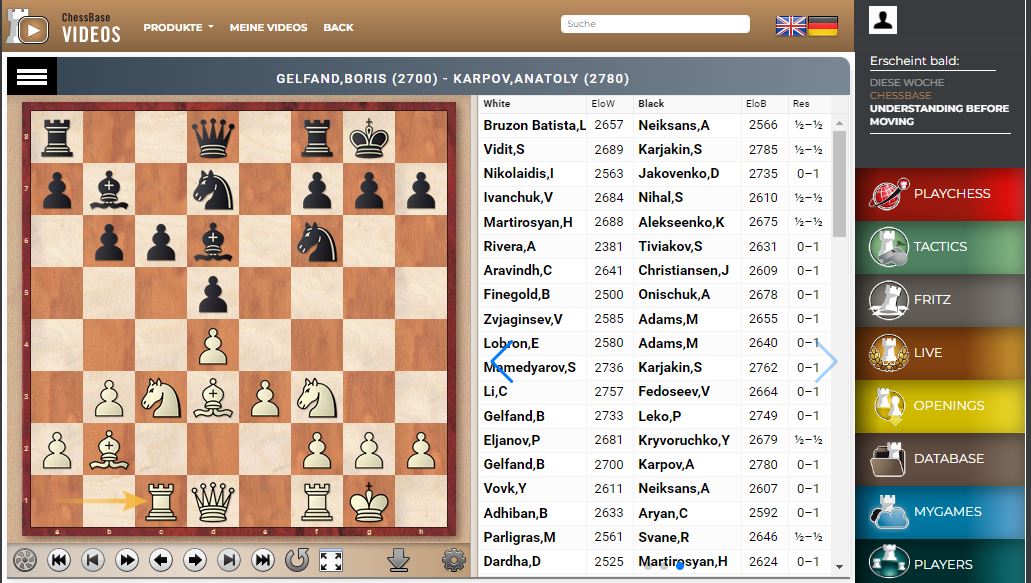
Karpov was not caught off guard by Gelfand’s novelty, 12.Rc1, and won the game
Interestingly, apart from the three Carlsen examples and the two played by Mendonca himself, most of them are by Zoltan Almasi (5) and Sergei Karjakin (8). Many other prominent players emphasise the importance of this opening.
“I concentrate on uncomplicated, solid variations and less on complex ones with an early ...Ba6”, says this year's winner of the Challengers Tournament at the Tata Steel Chess Festival, explaining his positional approach.
Mendonca thus provides a comprehensive repertoire, primarily by analysing the plans and pawn structures as well as the associated piece manoeuvres, and presenting them in a calm, analytical manner. How much of his own experience is involved is expressed again and again between the lines. It is amusing and yet convincing how the 18-year-old refers to his “years of personal experience”.
By using the Queen's Indian against other grandmasters, he knows exactly when the possible hanging pawns are good for Black and when they are good for White. He reveals when the black queenside bishop should go to a6 and when it should go to b7, and how Black can prevent White’s attacking possibilities via Ba3 or Ne5.
In addition to these basic plans, Mendonca also shows the maturity of an experienced grandmaster, despite his youth, when he discusses surprising knight manoeuvres such as Nb8-d7-b8-a6 and the optimally timed bishop interposition on b4. The latter is primarily about luring either the bishop or one of the knights to d2 and thus preventing the pieces on a3, c3 or e5 from taking up active positions.
As is generally the case, Mendonca first discusses the minor variations. These are above all the moves 4.Nc3, 4.e3, 4.Bg5 and 4.Bf4, which is similar to the London System.
It is fascinating to see how the author repeatedly explains transitions and similarities with other openings such as the Nimzo-Indian or Semi-Tarrash and emphasises the differences and similarities here and also in the main variations.
As described above, the Queen’s Indian expert focusses primarily on a strategic treatment of the opening. However, where necessary or advisable, he also likes to move into the tactical area, as can be seen in the variation 1.d4 Nf6 2.c4 e6 3.Nf3 b6 4.Nc3 Bb7 5.Bg5 h6 6.Bh4 Bb4 7.Nd2 e5!?
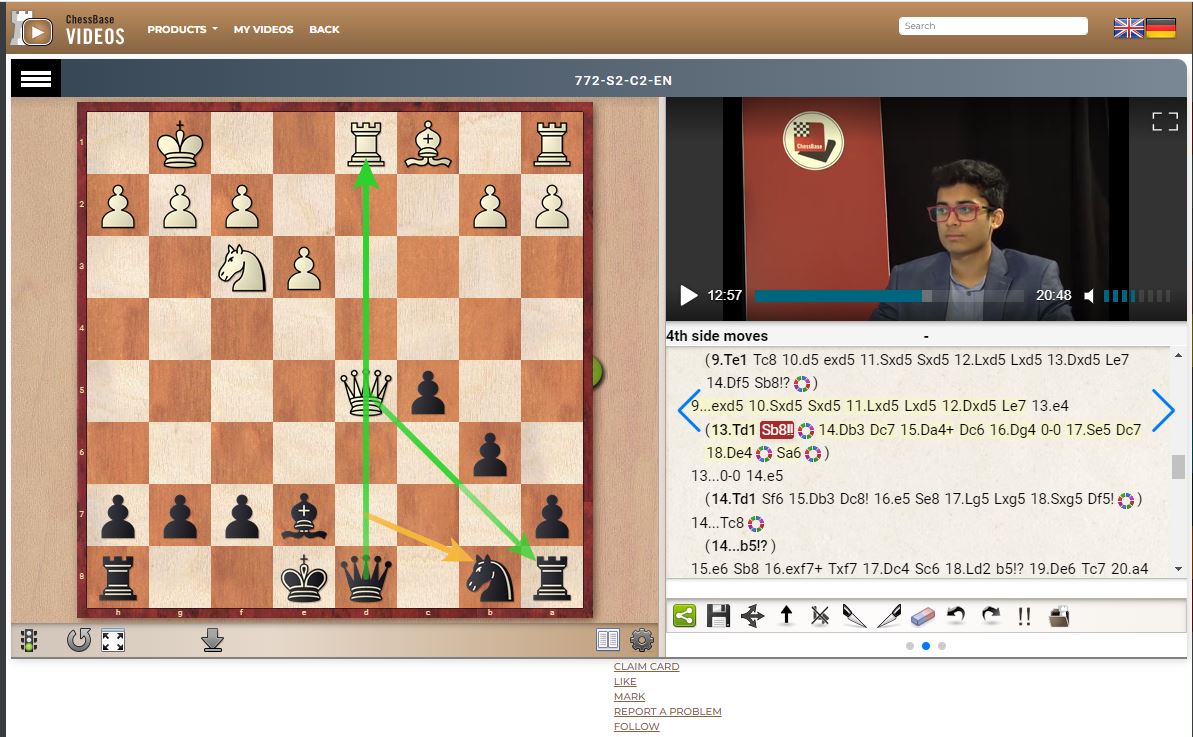
Here it gets tactical for a change
What a move: 13...Nb8!! A shock the first time! But once you’ve seen it ...
The sidelines chapter is followed by the two chapters on the main lines. In the chapter on 4.a3, Mendonca recommends that in case of 4...Bb7 5.Nc3, after 5...d5, you should prepare both for the variations arising from the immediate capture on d5 and also be prepared for the secondary variations without an immediate clarification in the centre.
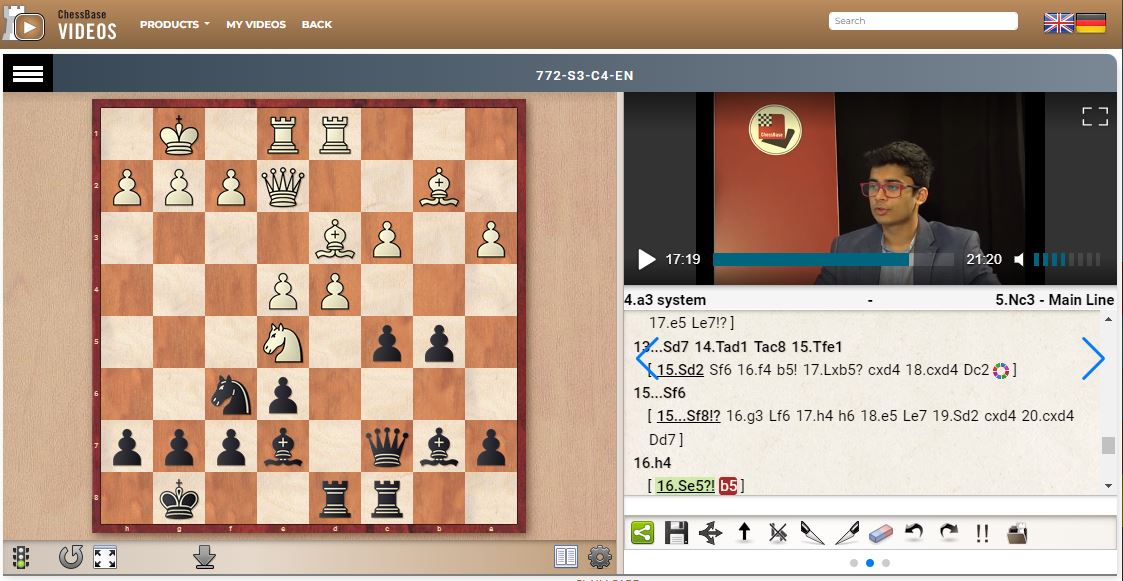
The pawn sacrifice on b5 — this also appears occasionally in the Queen’s Indian and guarantees counterplay
In the second main variation chapter, where he goes over 4.g3, he explains why he only advises 4...Ba6 in this case and how to deal with the many playable replies: Qb3, Nbd2, Qa4, Qc2 and b3.
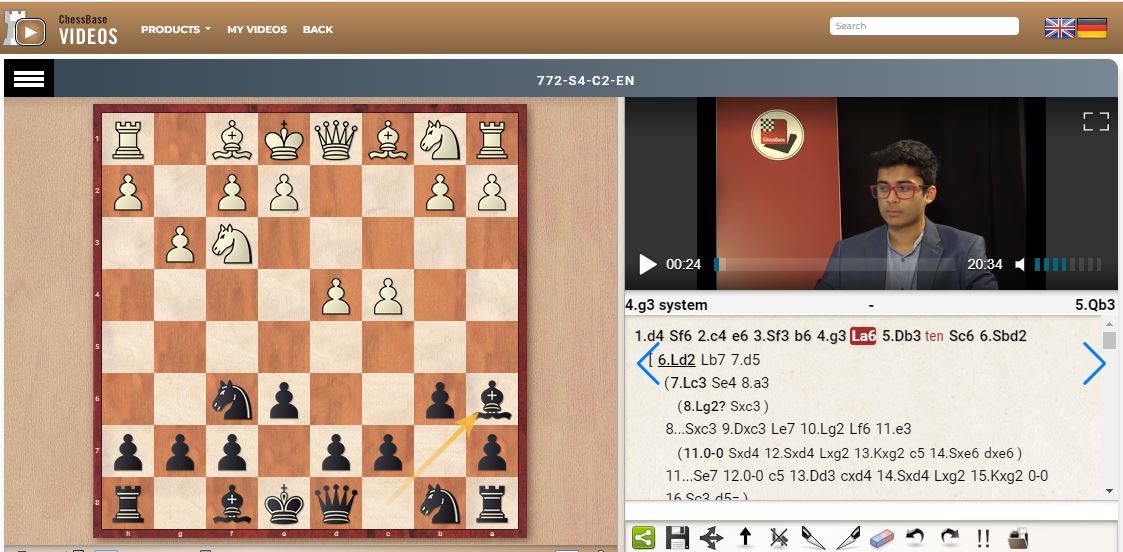
...and the bishop ends up on a6 after all
A total of 13 chapters and subchapters thus provide a comprehensive overview of the current state of theory in the Queen’s Indian. Thanks to the following ten exercises, the special repertoire training and the eleven practice positions as well as the possibility of playing them against Fritz, every Queen’s Indian expert now has it in his own hands how far he wants to delve into the training work.
Finally, there is also the comprehensive database mentioned above, with a large number of sample games and the option of transferring all interesting variations to your own databases.
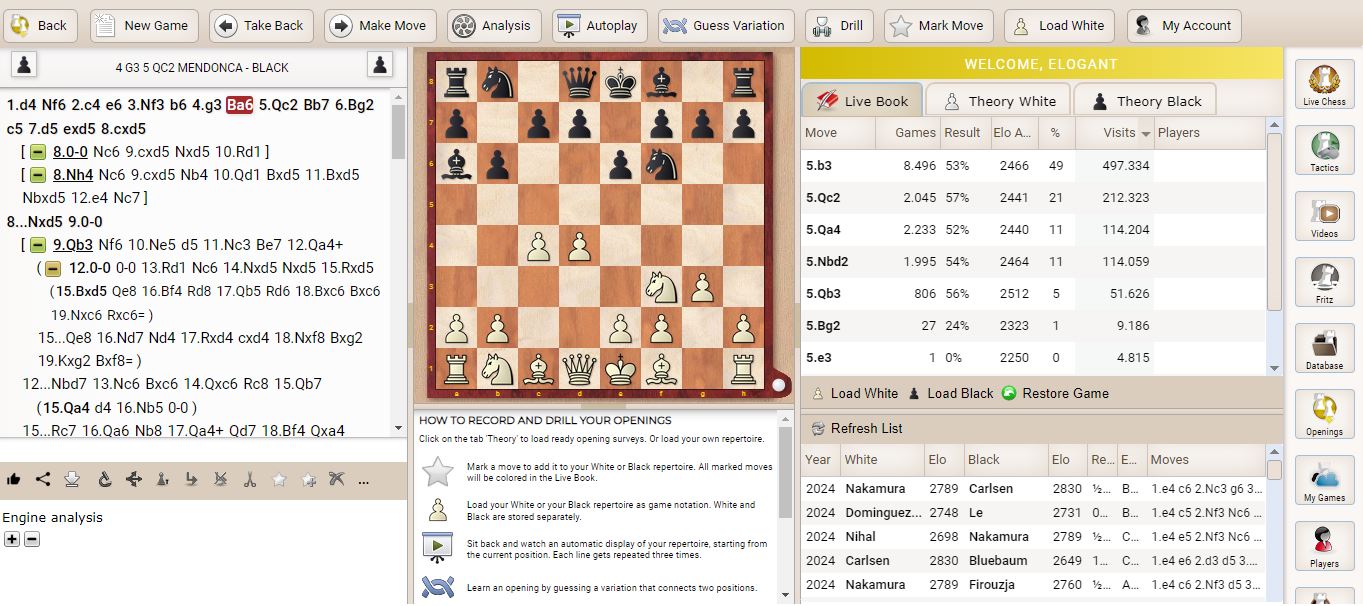
A vast repertoire consolidates the learning process
Leon Luke Mendonca is not only a strong grandmaster, but also a promising young coach. He analyses in a strictly structured and objective manner, which has two advantages. Firstly, one can learn rapidly and, secondly, you can quickly find your way around the very extensive material provided to analyse your own games while looking for ways to eradicate any acutely emerging gaps.
At the end of each of the detailed videos, some of which last almost half an hour, Mendonca provides a summary. Here he explains precisely which patterns and plans — and in exceptional cases specific variations — you really need to remember in order to use the opening successfully at the board.
He summarises this feature himself: “There is not much to learn in this opening if you understand the basic principles”. As he does an excellent job of emphasising these principles, this is the perfect FritzTrainer for all players who want to integrate a solid foundation into their repertoire against 1.d4.
| Advertising |